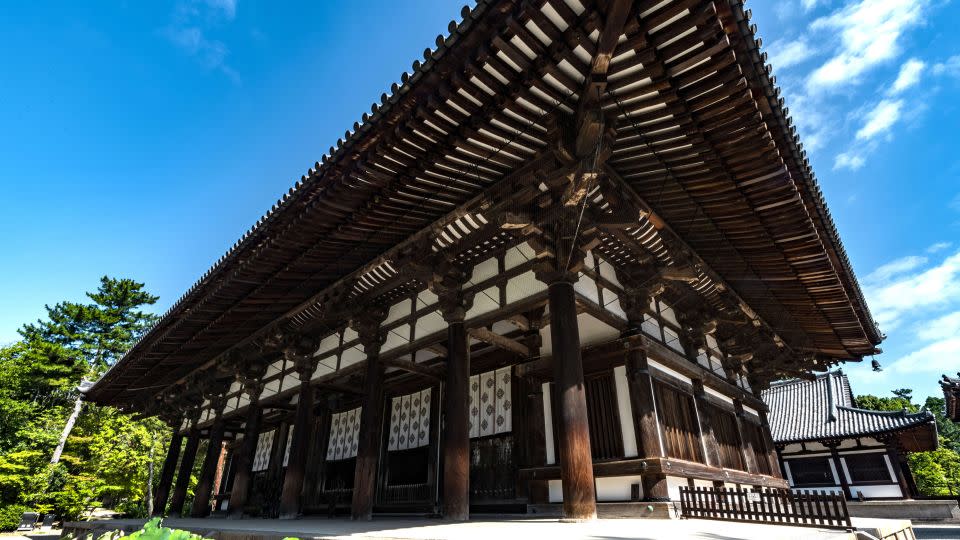Canadian teenager questioned for allegedly defacing a UNESCO-listed temple in Japan

Editor’s Note: Sign up for Unlocking the World, CNN Travel’s weekly newsletter. Get the latest news in aviation, food and drink, where to stay and other travel developments.
A 17-year-old Canadian was brought in for questioning for allegedly carving a name into a wooden pillar at a UNESCO-listed temple in the historic city of Nara, Japan, according to local police.
The alleged incident took place at the centuries-old Toshodaiji Kondo temple complex on the afternoon of July 7.
“On the southwest side of Toshodaiji Kondo, there are wooden pillars supporting the roof,” a police official told CNN. “On the pillars to the side, the boy carved ‘Julian’ on a wooden pillar about 170 centimeters above the ground with his nail.”
The official said a Japanese tourist saw the teen defacing the pillar and told him to stop before notifying temple employees.
Soon after, temple staff alerted nearby police of the incident and the teenager was brought in for questioning the following day, said the official.
“The boy admitted his act and says it was done not with the intent of harming Japanese culture,” said the official. “He is now with his parents, who were with him when the incident occurred.”
The official added that police would continue to investigate and if the teen is found to be in violation of the Law for Protection of Cultural Properties he will be referred to prosecutors. However, he will not be detained.
CNN has reached out to Toshodaiji Kondo officials for comment on the incident.
Historic Monuments of Ancient Nara
Toshodaiji Kondo, built in the 8th century, is one of eight sites that make up the Historic Monuments of Ancient Nara, which was inscribed as a UNESCO World Heritage Site in 1998.
“Buddhist temples, Shinto shrines and the excavated remains of the great Imperial Palace provide a vivid picture of life in the Japanese capital in the 8th century, a period of profound political and cultural change,” said the UNESCO inscription.
The inscription notes the sites “bear exceptional witness to the evolution of Japanese architecture and art and vividly illustrate a critical period in the cultural and political development of Japan, when Nara functioned as its capital from 710 to 784.”
A 45-minute train ride south of Kyoto, Nara is a popular destination for international and domestic tourists. In addition to the historic architecture, visitors come to experience the famous Nara Park, which is home to more than 1,000 free-roaming sacred deer.
Misbehaving tourists
News of the alleged vandalism comes on the heels of a similar incident at one of the world’s most famous historic attractions – Rome’s 2,000-year-old Colosseum.
In late June, a man was filmed apparently carving “Ivan+Hayley 23” into the historic property, grinning when he realized he was caught on camera.
The tourist, after being identified, sent a letter of apology to the local prosecutor’s office, his defense lawyer told CNN last week.
“I admit with the deepest embarrassment that only after what regrettably happened, I learned of the antiquity of the monument,” the alleged perpetrator wrote in his letter to the prosecutor, his lawyer, Alexandro Maria Tirelli, told CNN.
For more CNN news and newsletters create an account at CNN.com

